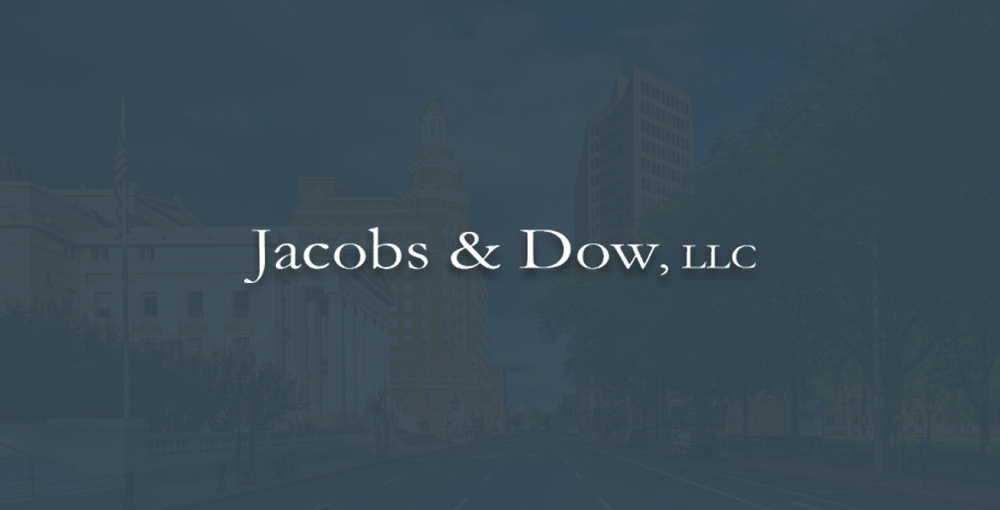
The Connecticut Civil Litigation Process Explained
The CT Lawsuit Process: A Step-by-Step Guide
Navigating the complexities of civil litigation can be daunting. You might be facing a personal injury or another dispute that requires legal action, leaving you unsure of what to expect. At Jacobs & Dow, LLC, we believe in providing clarity and support through every step of the Connecticut civil litigation process. Understanding the journey ahead is the first step toward regaining control.
Whether you’ve been injured because of someone else’s negligence or are involved in another civil matter, knowing the key stages can help demystify the legal road ahead. The civil litigation attorneys at Jacobs & Dow, LLC, will walk you through the essential phases of a lawsuit in Connecticut, from the initial paperwork to the final resolution.
The 5 Stages of Connecticut Civil Litigation
The Connecticut civil litigation process is structured to ensure both parties have a fair opportunity to present their case. While every lawsuit is unique, it generally follows five main stages.
1. Pleadings
The lawsuit officially begins with the pleadings stage. This is where the legal groundwork is laid.
- Complaint: The person or entity initiating the lawsuit (the plaintiff) files a formal document called a “complaint” with the court. This document outlines the allegations against the other party (the defendant) and specifies the legal claims and the relief sought (e.g., monetary damages).
- Summons and Service: Along with the complaint, a “summons” is issued. Both documents are then formally delivered to the defendant, a process known as “service.” This officially notifies them that a lawsuit has been filed against them.
- Answer: The defendant must then file a response, called an “answer,” within a specific timeframe. In the answer, the defendant will admit or deny the allegations in the complaint and may also raise defenses or file counterclaims against the plaintiff.
2. Discovery
Once the initial pleadings are filed, the case moves into the discovery phase. This is the longest and often most crucial stage of the CT lawsuit process. During discovery, both parties exchange information and gather evidence to build their case. Common discovery methods include:
- Interrogatories: Written questions that one party sends to the other, which must be answered under oath.
- Requests for Production: Formal requests for documents, records, and other tangible evidence relevant to the case.
- Depositions: Out-of-court oral testimony where witnesses are questioned under oath by the opposing attorney. A court reporter transcribes the entire session.
3. Pre-Trial Motions
Before a trial begins, either party can file motions with the court to resolve certain issues. A motion is a formal request for the judge to make a ruling or take a specific action.
For example, a party might file a motion to dismiss the case for legal insufficiency or a motion for summary judgment, arguing that the undisputed facts are so compelling that a trial is unnecessary. This stage is also when many settlement negotiations intensify.
4. Trial
If the case does not settle or get dismissed, it proceeds to trial. At trial, both sides present their evidence and arguments to a judge or a jury. Witnesses are called to testify, exhibits are introduced, and attorneys make opening and closing statements. After hearing all the evidence, the judge or jury will render a verdict, determining whether the defendant is liable and, if so, the amount of damages to be awarded.
5. Appeals
After the trial concludes and a final judgment is entered, the losing party has the right to file an appeal. An appeal asks a higher court (the Appellate Court or Supreme Court in Connecticut) to review the trial court’s proceedings for legal errors that may have affected the outcome. It’s important to note that an appeal is not a new trial; it is a review of the existing record.
The Role of Alternative Dispute Resolution
The reality is that most civil lawsuits never reach a trial. The majority of cases are resolved out of court through settlement. Often, this is achieved through Alternative Dispute Resolution (ADR) methods like:
- Mediation: A neutral third-party mediator helps the parties negotiate a mutually acceptable resolution.
- Arbitration: A neutral arbitrator hears evidence from both sides and makes a binding decision, similar to a judge.
ADR can be a less expensive and faster way to resolve disputes compared to a full trial.
Your Legal Ally at Jacobs & Dow, LLC
For nearly five decades, the team at Jacobs & Dow, LLC has been a trusted ally for clients across Connecticut. We understand that legal challenges can be overwhelming. With a steadfast commitment to delivering personalized service, our firm works tirelessly to safeguard your rights, whether you’ve been injured or are facing a complex civil dispute.
We handle a wide range of personal injury and criminal defense cases, approaching each one with diligence, innovation, and care. When you choose us, you gain a team that prioritizes your needs and develops strategic solutions tailored to you.
Understanding the civil litigation process in Connecticut is the first step toward navigating your legal journey with confidence. While the path may seem complex, you don’t have to walk it alone. If you need legal assistance, contact Jacobs & Dow, LLC today to schedule a consultation.
